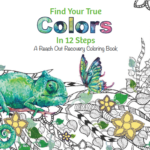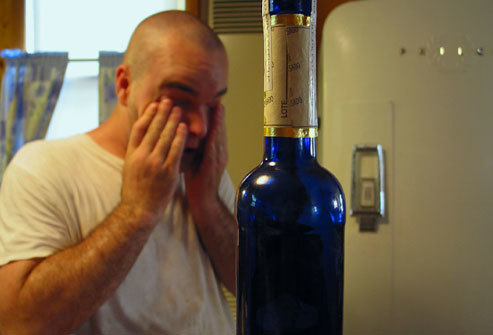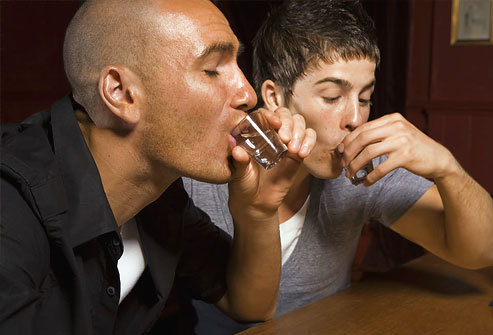Leslie Glass's Blog, page 348
July 27, 2018
What Is Fear Of Abandonment?
From Good Therapy: Fear of abandonment often stems from childhood loss. This loss could be related to a traumatic event, such as the loss of a parent through death or divorce. It can also come from not getting enough physical or emotional care. These early childhood experiences can lead to a fear of being abandoned by others later in life.
How Abandonment Works
Healthy human development requires needs for physical and emotional care to be met. Unmet needs can result in feelings of abandonment. Experiencing abandonment can become a traumatic life event. The death of a parent can be a traumatic event for a child. Feeling unsafe due to a threatening situation like abuse or poverty can also cause trauma.
Some degree of abandonment fear can be normal. But when fear of abandonment is severe and frequent, it can cause trouble. It may impact how a person’s relationships develop. When this is the case, the support of a therapist or counselor may help.
Emotional Abandonment
A pattern of emotional abandonment or neglect can also be traumatic. It can qualify as a form of abandonment. Emotional abandonment can occur when parents:
Stifle their children’s emotional expression
Ridicule their children
Hold their children to standards that are too high
Rely too heavily on children for their own sense of worth
Treat their children as peers
People who felt abandoned as children may be more likely to repeat this pattern with their children. But some emotionally abandoned children recognize this pattern. They can go on to nurture their own children and break the cycle of abandonment. Many of these signs of abandonment may also play out between people in a relationship.
Stress or overwhelm can contribute to emotional abandonment. People with unmet needs often have a difficult time meeting the needs of others. Practicing self-care is an important part of making sure one’s own needs are met. The person who practices self-care can then meet the needs of their child or partner in a healthy way.
Long-Term Effects Of Abandonment Issues
A person who has experienced abandonment may be more likely to have long-term mental health issues. These are often based on the fear that abandonment will recur. A child who was abandoned by a parent or caregiver may have mood swings or anger later in life. These behaviors can alienate potential intimate partners and friends. A child’s self-esteem can also be affected by lack of parental support.
Abandonment fears can impair a person’s ability to trust others. They may make it harder for a person to feel worthy or be intimate. These fears could make a person prone to anxiety, depression, codependence, or other issues. Abandonment issues are also linked to borderline personality (BPD) and attachment anxiety. Someone who lacks self-esteem due to childhood abandonment may seek relationships that reinforce their beliefs.
References:
Abandonment & attachment related trauma treatment & rehab center. (n.d.). Retrieved from http://www.therefuge-ahealingplace.co...
Megase, K. (2016, March 3).
How fear of abandonment affects relationships. Retrieved from https://www.counselling-directory.org...
Schoenfelder, E. N., Sandler, I. N., Wolchik, S., & MacKinnon, D. (2011).
Quality of social relationships and the development of depression in parentally-bereaved youth. Journal of Youth and Adolescence, 40(1), 85-96. Retrieved from http://search.proquest.com/docview/82...
Wade, B. (1995, 04). Fear of abandonment. Essence, 25(79). Retrieved from http://search.proquest.com/docview/22...
20 signs someone has abandonment issues. (2017, September 8). Retrieved from https://www.aconsciousrethink.com/606...
 Did you know the 12 Steps, which have helped millions find recovery, can also help you find peace and serenity? Check out our latest book, Find Your True Colors In 12-Steps.
Did you know the 12 Steps, which have helped millions find recovery, can also help you find peace and serenity? Check out our latest book, Find Your True Colors In 12-Steps.
The post What Is Fear Of Abandonment? appeared first on Reach Out Recovery.
How Much Does It Really Cost To Get Sober?
From Lela Moore @ The NY Times: People recovering from opioid addiction and their families discuss the financial and emotional costs of treatment. Tess Henry’s family paid $12,000 for 30 days of rehab from opioid addiction. She had done two more cycles of treatment without achieving sobriety. So her family agreed to pay $20,000 for 28 days of more rehab. But they never got the chance.
A few days after assuring her mother that she planned to fly to Virginia to resume treatment, Ms. Henry was murdered. The tragic end of Ms. Henry’s six-year struggle to recover from an opioid addiction that began with a prescription for cough syrup was chronicled last week in The New York Times by Beth Macy, a journalist who covers the opioid crisis.
It takes eight years, and four to five attempts at treatment, for the average person addicted to opioids to achieve one year of remission, according to John Kelly, a researcher and professor of psychiatry at Harvard Medical School, whom Ms. Macy cited in her Sunday Review essay.
Some people manage to achieve recovery through free 12-step programs, while others spend hundreds of thousands of dollars.
Ms. Henry’s story prompted readers to share with us in our comments section their own struggles with recovery or the struggles of their family members.
Here is a selection of the comments that cite costs — in out-of-pocket expenses, as well as in time, insurance payouts and human patience — of recovery. They are condensed and lightly edited.
‘I’m Lucky It Didn’t Cost Me More’
$25,000 for Suboxone, $16,000 of doctor appointments, $200,000 paid by insurance – I abused opiates for four years. I quit one-time and have been sober for five years. I’ve been on Suboxone [a drug that helps prevent opioid withdrawal symptoms] for five years as well. Luckily I make enough money to spend $400/month on Suboxone. I also moved 1,500 miles away from where I bought OxyContin when I quit, went to a $100,000 rehab on private insurance, and then stayed for 10 more months working as a nighttime janitor and going to A.A. like 10 times a week.
Recovering from opiates has cost me over $25,000 for Suboxone, $16,000 of doctor appointments, and it’s cost my insurance about $200,000. It cost me five years of my life. I’m lucky it didn’t cost me more.
— Jacqueline, Colorado
‘The System For Getting Into Rehabs Is Like A Grotesque Game Show’
I’m a recovering heroin addict myself, and in my experience the system for getting into rehabs (without a lot of money up front and good insurance, at least) is like a grotesque game show in the spirit of “Black Mirror.” The standard practice is this: if you’re an addict who needs to go to rehab, you call and leave a message.
If you string together a long enough sequence of mornings calling in, and thus demonstrate enough desperation to satisfy them, they will eventually call you back, for you have passed the first test. If you’re lucky, they’ll make you an offer that expires in about 4-5 hours, telling you to come that moment. If you don’t have a car or a guardian angel who will take you to their strategic position in the middle of nowhere, too bad.
But without real long-term treatment, many of those addicts will overdose again and again, and odds are they won’t get that lifesaving opioid blocker in time, one of those times. Consider the resources wasted every day by having potentially productive citizens reduced to unemployability, and then spending money to have police fight the “drug war,” and to institutionalize addicts in jails and prison. Consider the extra burden on Medicaid, welfare programs, and homeless shelters. Consider the cost of drug-related crime — which is to say, the majority of crime. More important, forget all of those expenses and simply consider what it means for millions of families to have loved ones in the grip of untreated addiction.
— Steve, New Jersey
‘Free. Nearly Everywhere. Tested.’
$0 for 12 steps, endless daily hard work – As someone for whom the 12 steps did miraculously work (along with endless, daily hard work), my meetings are filled with similar stories. Decades of recovery. We’re never cured, but we’re alive and not using. I was not in a position to pay for rehab or leave my three young kids, and A.A./N.A. was incredible. Free. Nearly everywhere. Tested. It deserves much more credit.
— Ella Jackson, New York
‘Hundreds Of Thousands Of Dollars Spent’
A sibling in and out of treatment for more than 10 years – Having a sibling who has been in and out of treatment for over 10 years (hundreds of thousands of dollars spent) and the undivided and dedicated attention of a parent figure (who has dedicated her life to him), I assure you that recovery success is not directly tied into family support but rather to the individual’s desire to be well.
Having read individual success stories I find one common thread. A commitment to a goal and grit seem to be the driving forces behind recovery. Love, time, forgiveness and patience are all complementary ingredients.
— Korry, New York
He Got Sober ‘Without Expensive Rehab Programs’
$0 for 12 steps – My brother was a high functioning addict for years before his final painful trip to bottom. Then 4 years in a spiral as he lost everything before a series of court mandated A.A. meetings lit a light bulb (the first meetings he attended, he was high).
He got straight and sober within the 12 step program without expensive rehab programs (we were lucky). Then he spent 8 wonderful years of giving back to his community; became a mentor to many first offenders while holding down a job working with disabled adults, taking them camping and using art and music to enrich their lives. When he died from liver cancer (from hepatitis C from his old drug injections), a line stretched a block at the funeral. I never shook so many hands or heard such heart warming stories as I did at Dean’s funeral.
We don’t hear about the successful stories of recovery so there’s one for you. We were lucky to get him back and to have such good memories now.
— Bill Cullen, Portland, Ore.
‘All I Had Was The 12 Steps’
$0 for 12 steps, a hard road – Rest in peace, Tess, and God bless all those who loved and helped her. I know well the heartbreak and hurt that addicts inflict on others because I am one and have done those things. I know even better the never ending cycle of deepening addiction and the effects on every aspect of your life, from loss of health, any hope of a career, financial ruin, utter hopelessness and the hollowing out of one’s soul. But I know better the flip side, of hope and happiness and redemption and overcoming the darkness, as I have been continuously sober now for more than 32 years. And if there was hope for me, there is hope for anyone and everyone.
There were no maintenance drugs other than methadone when I got clean and sober decades ago. All I had was the Twelve Steps and the love and hope and care and example of others in recovery. And that worked for me, although it was the hardest road I ever traveled early on.
— Rich D., Tucson
 The 12 Steps, which have helped millions find recovery, can also help you. Check out our latest book, Find Your True Colors In 12-Steps.
The 12 Steps, which have helped millions find recovery, can also help you. Check out our latest book, Find Your True Colors In 12-Steps.
The post How Much Does It Really Cost To Get Sober? appeared first on Reach Out Recovery.
July 26, 2018
7 Common Misconceptions About Anxiety
Anxiety is the most common problem people seek to address in psychotherapy. Anxiety problems are linked to both genetic and environmental factors, and they manifest in various forms. Some people suffer with chronic, free-floating worry; others fear certain specific objects or situations, or dread being evaluated negatively in social situations. For some, anxiety relates mainly to the recollections of past trauma, while others may suffer from debilitating panic attacks, marked by symptoms such as racing heart, breathing difficulties, sweating, trembling, and dizziness. Untreated or poorly managed, excess anxiety can hinder severely one’s quality of life. Fortunately, anxiety problems can often be treated well with a combination of medication and psychotherapy.
As a psychologist, I have been treating anxious clients for roughly 25 years. People who deal with anxiety are a diverse group and do not share a single personality profile. They come from all walks of life, ethnicities, and backgrounds, each with his or her own history, temperament, challenges, and sensibilities.
Yet there are commonalities. Over the years I’ve noticed that certain issues keep showing up in treatment, particularly some erroneous assumptions, attitudes, and habits related to anxiety, that stand in the way of improvement and success. Below are quick outlines of some of these most common misconceptions regarding anxiety (I have written about some of these before, here):
The linearity assumption: “If I do nothing, my anxiety will continue to increase indefinitely.”
Many people who deal with anxiety and panic will recognize the situation: you are somewhere doing something. Suddenly, your body is a frenzy of symptoms. You’re breathing hard, dizzy, and lightheaded; your heart is beating a mile a minute; you feel like you’re going crazy. Feeling your anxiety rising, you tell yourself that if you don’t do something, the symptoms will continue to escalate in a linear function, fast and upward with every passing minute, getting worse and worse ad infinitum. This prediction is intuitive, but erroneous.
In fact the relationship between panic symptoms and time is not linear but curvilinear, shaped like an inverted U. If you stay with your symptoms past the point of marked discomfort, they will continue to escalate for a while, but not forever. After a while they will level off, and then decline. This is largely due to the physiological process of habituation by which prolonged exposure to the same stimulus leads to reduction in nervous system excitation, and hence reduced anxiety.
People who deal with anxiety and panic are often uneducated about this fact. One reason for this is that they have never experienced it in real time because they tend to escape the situation before entering the habituation zone. Thus, an important part of anxiety treatment involves exposure practice, by which a person is guided to remain with their symptoms past the point of discomfort, to give their nervous system the time to habituate and to provide them with firsthand evidence refuting the linearity assumption.
Delaying to avoid, rather than avoiding delay.
If you are feeling scared while in line to jump off the high diving board at the pool, your anxiety may compel you to retreat to the back of the line, thus delaying that dreaded dive. Alas, what you’re also doing is extending your waiting time, and with that your anticipatory anxiety period. Anticipatory anxiety is usually much worse than the actual anticipated event, because it is unbounded by the parameters of a specific action in the world. Since nothing is actually happening, your anxious mind is free to roam wherever it wants—which usually means toward catastrophic scenarios. Now in life, real catastrophes are rare and unlikely. But within the anxious mind, they are frequent and imminent. Going to the back of the line will thus make you more, not less, anxious and therefore more likely to fail at achieving your goal. If you’re anxious about something (assuming it is not actually dangerous), your best bet is to move toward it, not away from it.
Shifting attention from the anxiety-provoking task to the anxiety symptoms.
The psychologist David Barlow and others have shown that people who deal with performance anxiety in bed have several common characteristics. For one, their anxious thoughts (“am I a good lover?”) cause them to turn their attention to the thoughts and away from the lovemaking, with predictably negative consequences for said lovemaking. That’s a common mistake outside the bedroom as well. When we’re anxious, our fight-or-flight system gets activated, which involves several annoying, distracting, and alarming (yet not dangerous) bodily symptoms. The discomfort of these symptoms may tempt us to focus on trying to eliminate them, which in the short term usually means avoidance or escape. Skilled anxiety management, however, involves taking your anxious arousal as a call to focus more intently on the task at hand, rather than focusing on the symptoms. The correct response to a fire alarm sounding off is not to turn off the fire alarm or cover your ears, but to go fight the fire.
Conflating fear and danger: “I’m scared, therefore I must be in danger.”
Our anxiety system has evolved in a time where danger and fear were closely aligned. But today, you probably live in an environment where ancient fear cues no longer denote real danger. It’s important not to confuse the two, but doing so required some cognitive effort. When you feel anxious, ask yourself: ‘am I in danger?’ If not, then the anxiety symptoms are noise, not signal, and are best regarded as such.
Related to this is the distinction between how you feel and how you are. These are not necessarily one and the same. For example, drunk people often feel they can drive fine. And people in the midst of a manic episode feel they can accomplish anything, etc. Likewise with anxiety, people in the midst of a panic attack may feel out of control, but they are not in fact out of control. Those who experience panic attack while driving, for example, will always find a way to bring their car to a stop safely and call for help—all of which are signs of ample control. Your feelings are mind events, not world events. Don’t believe everything you feel.
Hating on yourself because you are anxious: “I’m weak and stupid for being anxious about this.”
Many people beat up on themselves for getting over-anxious in certain situations. They may berate themselves, call themselves weak, stupid etc., believing that such self denigration will somehow motivate them to improve and overcome. This is a mistake. Self-rejection is not a path to self- improvement. The correct approach is to use self-compassion and curiosity when learning to deal with anxiety. It’s much more effective to tell yourself: “To feel anxiety is part of being human. Let me accept this feeling, inquire about it, get to know it, and treat myself with kindness as I take on the challenge of learning to manage it well.”
Hating on anxiety because it afflicts you.
The symptoms of anxiety are annoying and scary. It’s no wonder that once we have experienced severe anxiety, we are disinclined to want to repeat the experience. Hence avoidance. Alas, while avoidance is effective in providing short-term relief, it is counterproductive in the long term. By way of an example: Let’s assume that you hate mold. Now let’s assume you find mold in your basement. Your intuitive, initial impulse may be to avoid going in the basement for fear of encountering the noxious mold. This is effective in the short term, yet problematic in the long term, because under these conditions the mold will spread, soon invading other rooms in the house. If you want to get rid of your mold problem, you have to actively confront it; you have to make contact with the mold, in the basement. It’s unpleasant in the short term, but profitable in the long term. And life is long term.
It’s important to remember in this context that the anxiety system is designed to protect us. Hating on anxiety just because it’s annoying is a bit like hating on a baby who cries a lot. Crying, for a baby, is a proximity-seeking behavior necessary for creating attachment relations with a caregiver. By crying, the child alerts you to some unmet need to which you may then tend. A child who’s unable to cry when they’re hungry, scared, or in pain is less likely to survive. Like crying, our anxiety response is a system designed for protection, not harm. You don’t want to get rid of it. You want to learn how to understand, manage, and deal with it properly.
The ‘gain without pain’ expectation: “A good life is free of discomfort.”
Human beings like comfort. And American human beings like comfort perhaps more than anyone. Most of us are deep in the business of avoiding discomfort. And that’s OK. Except that discomfort is an unavoidable feature of life. In fact, achieving any meaningful goal or end in this life entails enduring discomfort (think: marriage; raising children; running a business; finishing college; getting old). Therefore, while we spend much time and energy figuring out ways to reduce or avoid discomfort, it is also useful to spend some effort learning how to tolerate discomfort, so that we are able to handle it when the situation calls for it.
Thus, anxiety episodes and experiences are de facto opportunities to practice discomfort-management and to develop skills in that area. For someone who can’t swim, the swimming pool is scary. Yet the best solution is not to avoid the pool, but to learn to swim.
The post 7 Common Misconceptions About Anxiety appeared first on Reach Out Recovery.
Young People’s Mental Health: We Can Build A Resilient Generation
By Paul Burstow from The Guardian:
Half of lifelong mental illness starts before the age of 14. What if we could change that? What if we could tackle the causes and reduce the incidence of enduring mental health problems?
Those are the questions Birmingham University’s mental health commission has been grappling with over the past 18 months. Our report and call to action launched this month.
Around one in four children and young people who need help with their mental health get a service. By 2021, that will rise to one in three and the picture is mixed across the country. We must do more to improve access to evidence-based mental health treatment and support. But this is not sufficient.
Simply trying to keep pace with demand for treatment and support is not sustainable, even if it were desirable.
The commission asked the NHS Benchmarking Networkto estimate the staffing and cost implications of a range of scenarios for improving access to mental health services for children and young people. To reach all those who need treatment or support would require an extra 23,800 staff at a cost of £1.77m a year.
Perhaps the money could be found, a long overdue investment in the mental health of the nation. But could the staff? Of course there are productivity gains to be had in the way child and adolescent services are organised, digital channels to be used and new models of care – such as the Tavistock-inspired Thrive model – to be adopted, but this is still trying to catch up with the demand.
Like a lifeguard forever pulling drowning people from the sea, too busy to ask why they got into trouble in the first place.
This is a challenge for the whole of society that needs government leadership – at local and national level – to do something about the causes of the demand. Government must get serious about prevention and early action. There is sufficient evidence of what actions we can take to promote good mental health and reduce the risk factors behind mental illness. Most of these lie beyond the consulting room; the health impacts of adverse childhood experiences, trauma and social and economic inequality are well documented. The consequences can often be lifelong.
Last year, Public Health England launched its Prevention Concordat, which set out the investment cases for adopting eight practices and programmes to promote good mental health and tackle some of the causes. But these “best buys” for prevention require funding before they can start to pay a dividend.
Our report identifies four building blocks for a mentally prosperous nation:
nurture positive family, peer and community relationships;
minimise adverse experiences and exclusions;
develop mentally friendly education and employment; and
respond early and well to first signs of distress.
Each building block has a number of promising and well-evidenced interventions and approaches.
The commission argues that by systematically deploying these practices and programmes to maximise resilience and minimise risk factors, it is within our grasp to halve the number of people living with lifelong mental health problems in a generation.
So how can we shift the dial on prevention and early action? Put simply, what gets measured gets done.
Thirty years ago, the Treasury changed the rules to ringfence spending on public buildings and infrastructure so money wasn’t swallowed up by the day to day demands of running services. Carving out capital from revenue spending in our public accounts makes more visible the consequences of underinvestment in the nation’s vital infrastructure.
What about taking the same approach to spending on our social infrastructure, on prevention and early action? The commission argues that the Treasury must make visible the cost of underinvesting in prevention. Like capital spending, spending on prevention has longer payback periods. It is time we accounted for prevention spending separately from day-to-day spending.
Next year’s spending review is a golden opportunity to start this task and the right time to take the long-term investment decisions necessary to support the commission’s goal of a resilient generation.
This requires leadership from government across public services, convening and working in partnership with civil society organisations, business and academia to mobilise the resources to tackle causes and reduce the numbers living with lifelong mental illness.
The post Young People’s Mental Health: We Can Build A Resilient Generation appeared first on Reach Out Recovery.
July 25, 2018
10 Ways To Build Stronger Boundaries
From Margarita Tartakovsky @ Psych Central: Boundaries are essential to healthy relationships and, really, a healthy life. Setting and sustaining boundaries is a skill. Unfortunately, it’s a skill that many of us don’t learn, according to psychologist and coach Dana Gionta, Ph.D. We might pick up pointers here and there from experience or through watching others. But for many of us, boundary-building is a relatively new concept and a challenging one.
Having healthy boundaries means “knowing and understanding what your limits are,” Dr. Gionta said. Below, she offers insight into building better boundaries and maintaining them.
1. Name Your Limits
You can’t set good boundaries if you’re unsure of where you stand. So identify your physical, emotional, mental and spiritual limits, Gionta said. Consider what you can tolerate and accept and what makes you feel uncomfortable or stressed. “Those feelings help us identify what our limits are.”
2. Tune Into Your Feelings
Gionta has observed two key feelings in others that are red flags or cues that we’re letting go of our boundaries: discomfort and resentment. She suggested thinking of these feelings on a continuum from one to 10. Six to 10 is in the higher zone, she said.
If you’re at the higher end of this continuum, during an interaction or in a situation, Gionta suggested asking yourself, what is causing that? What is it about this interaction, or the person’s expectation that is bothering me?
Resentment usually “comes from being taken advantage of or not appreciated.” It’s often a sign that we’re pushing ourselves either beyond our own limits because we feel guilty (and want to be a good daughter or wife, for instance), or someone else is imposing their expectations, views or values on us, she said.
“When someone acts in a way that makes you feel uncomfortable, that’s a cue to us they may be violating or crossing a boundary,” Gionta said.
3. Be Direct
With some people, maintaining healthy boundaries doesn’t require a direct and clear-cut dialogue. Usually, this is the case if people are similar in their communication styles, views, personalities and general approach to life, Gionta said. They’ll “approach each other similarly.”
With others, such as those who have a different personality or cultural background, you’ll need to be more direct about your boundaries. Consider the following example: “one person feels [that] challenging someone’s opinions is a healthy way of communicating,” but to another person this feels disrespectful and tense.
There are other times you might need to be direct. For instance, in a romantic relationship, time can become a boundary issue, Gionta said. Partners might need to talk about how much time they need to maintain their sense of self and how much time to spend together.
4. Give Yourself Permission
Fear, guilt and self-doubt are big potential pitfalls, Gionta said. We might fear the other person’s response if we set and enforce our boundaries. We might feel guilty by speaking up or saying no to a family member. Many believe that they should be able to cope with a situation or say yes because they’re a good daughter or son, even though they “feel drained or taken advantage of.” We might wonder if we even deserve to have boundaries in the first place.
Boundaries aren’t just a sign of a healthy relationship; they’re a sign of self-respect. So give yourself the permission to set boundaries and work to preserve them.
5. Practice Self-awareness
Again, boundaries are all about honing in on your feelings and honoring them. If you notice yourself slipping and not sustaining your boundaries, Gionta suggested asking yourself: What’s changed? Consider “What I am doing or [what is] the other person doing?” or “What is the situation eliciting that’s making me resentful or stressed?” Then, mull over your options: “What am I going to do about the situation? What do I have control over?”
6. Consider Your Past And Present
How you were raised along with your role in your family can become additional obstacles in setting and preserving boundaries. If you held the role of caretaker, you learned to focus on others, letting yourself be drained emotionally or physically, Gionta said. Ignoring your own needs might have become the norm for you.
Also, think about the people you surround yourself with, she said. “Are the relationships reciprocal?” Is there a healthy give and take?
Beyond relationships, your environment might be unhealthy, too. For instance, if your workday is eight hours a day, but your co-workers stay at least 10 to 11, “there’s an implicit expectation to go above and beyond” at work, Gionta said. It can be challenging being the only one or one of a few trying to maintain healthy boundaries, she said. Again, this is where tuning into your feelings and needs and honoring them becomes critical.
7. Make Self-care A Priority
Gionta helps her clients make self-care a priority, which also involves giving yourself permission to put yourself first. When we do this, “our need and motivation to set boundaries become stronger,” she said. Self-care also means recognizing the importance of your feelings and honoring them. These feelings serve as “important cues about our wellbeing and about what makes us happy and unhappy.”
Putting yourself first also gives you the “energy, peace of mind and positive outlook to be more present with others and be there” for them.” And “When we’re in a better place, we can be a better wife, mother, husband, co-worker or friend.”
8. Seek Support
If you’re having a hard time with boundaries, “seek some support, whether [that’s a] support group, church, counseling, coaching or good friends.” With friends or family, you can even make “it a priority with each other to practice setting boundaries together [and] hold each other accountable.”
Consider seeking support through resources, too. Gionta likes the following books: The Art of Extreme Self-Care: Transform Your Life One Month at a Time and Boundaries in Marriage (along with several books on boundaries by the same authors).
9. Be Assertive
Of course, we know that it’s not enough to create boundaries; we actually have to follow through. Even though we know intellectually that people aren’t mind readers, we still expect others to know what hurts us, Gionta said. Since they don’t, it’s important to assertively communicate with the other person when they’ve crossed a boundary.
In a respectful way, let the other person know what in particular is bothersome to you and that you can work together to address it, Gionta said.
10. Start Small
Like any new skill, assertively communicating your boundaries takes practice. Gionta suggested starting with a small boundary that isn’t threatening to you, and then incrementally increasing to more challenging boundaries. “Build upon your success, and [at first] try not to take on something that feels overwhelming.”
“Setting boundaries takes courage, practice and support,” Gionta said. And remember that it’s a skill you can master.
 Did you know the 12 Steps, which have helped millions find recovery, can also help you find peace and serenity? Check out our latest book, Find Your True Colors In 12-Steps.
Did you know the 12 Steps, which have helped millions find recovery, can also help you find peace and serenity? Check out our latest book, Find Your True Colors In 12-Steps.
The post 10 Ways To Build Stronger Boundaries appeared first on Reach Out Recovery.
Demi Lovato Is Stable After Overdose
From Jordan Runtagh & Melody Chiu @ People.com: Demi Lovato was rushed to a Los Angeles hospital on Tuesday after suffering an apparent overdose and is now “stable,” a source close to the singer tells PEOPLE.
A representative for the Los Angeles Fire Department tells PEOPLE they “transported a 25-year-old female patient to a local hospital,” while the Los Angeles Police Department confirms both departments “responded to a medical emergency” in the area of her Hollywood Hills home.
Audio of the emergency call obtained by TMZ reveals the pop star was unconscious upon their arrival and revived with Narcan — an emergency medication to reverse the effects of a narcotic overdose. While TMZ reports the overdose is heroin-related, a source close to Lovato claims to PEOPLE that it is not.
Lovato has battled addiction, mental illness and disordered eating for years. In 2010, she entered treatment, where she was treated for bipolar disorder, bulimia, self-harm and addiction. She relapsed after she left the treatment center, then entered a sober living facility for a year.
But even after treatment, insiders say she still struggled with her private pain. “Demi was never really clean and sober from all of her demons,” a source tells PEOPLE. “She has been fighting depression and anxiety for quite some time — and is still in such a dark place. She was sober for a while, but not completely sober for six years.”
Last March, Lovato revealed she celebrated six years of sobriety, but in June she released a new song, “Sober” on which she revealed that she had relapsed.
“Mama, I’m so sorry I’m not sober anymore / And daddy please forgive me for the drinks spilled on the floor,” she sang on the heartbreaking piano ballad. “And I’m sorry for the fans I lost who watched me fall again / I wanna be a role model, but I’m only human.”
At the end of the track, Lovato sings: “I’m sorry that I’m here again / I promise I’ll get help / It wasn’t my intention / I’m sorry to myself.”
A source close to the situation tells PEOPLE there have been clear signs that all isn’t well with Lovato’s health. “Things have been a total mess for months. She and her team severed ties, and they played a large part in getting her sober years ago. She hasn’t been in a good place.”
An additional insider also noticed a downturn. “You could tell when Demi was doing well with her sobriety because she wasn’t hanging out at clubs,” the source tells PEOPLE. “She has still very much kept up her work schedule and daily life, but there have definitely been signs that she isn’t doing great with her sobriety.”
Live Nation has confirmed to the Press of Atlantic City that Lovato’s concert scheduled for Thursday in the New Jersey seaside resort town has been canceled.
 Did you know the 12 Steps, which have helped millions find recovery, can also help you find peace and serenity? Check out our latest book, Find Your True Colors In 12-Steps.
Did you know the 12 Steps, which have helped millions find recovery, can also help you find peace and serenity? Check out our latest book, Find Your True Colors In 12-Steps.
The post Demi Lovato Is Stable After Overdose appeared first on Reach Out Recovery.
What Is Setting Boundaries
Boundaries Are Rules To Follow: We know how the rules work with driving. Here are a few: Keep your distance. Don’t cut in front of a moving vehicle. When a car stops in front of you, you stop, too. It’s common sense to follow the rules to avoid accidents. Rules make life on the road safer, and you just do it without thinking. It’s common sense, and it’s the law.
People Are Moving Vehicles Without Rules
Human beings don’t drive on roads, however. We all have our own personalities and will and expectations. We’re all raised in different environments and different cultures. We don’t have the same ideas about how to treat each other, and often there is also a double standard when it comes to the treatment of women and children. To confuse the issue even more, some people (both men and women) are more forceful than others about getting their way. And some have been abused as children. That means that the person with the most powerful will and unhealthy role models as a child often sets the tone of what will happen in adulthood. The more easy-going people can find themselves in relationships they can’t control, and in which they have no voice. And the situation can get a lot worse over time. It’s also much harder if you hate confrontation or happen to be a people pleaser.
You Don’t Get A Ticket For Bullying or Hurting Others
It’s not fair, but there are no hard and fast rules for fair treatment or showing respect. Family members push you around. Friends can manipulate you. Spouses can get in your face. When you’re a child, there’s not much you can do about it. Fighting back can lead to trouble, and you can even get physically hurt. Marsha had a husband who always took her birthday checks. She had no say in the matter. How can you take control as an adult if you never did it before? Marsha needed help.
Red Alert. If you’re in a really abusive relationship, get help. Trying to establish boundaries by yourself can be dangerous. Check out helpguide.org and women’s law.org.
Setting Boundaries
This is for people pleasers who give away their power by being nice, or people who don’t like to fight back. Boundaries are like putting up fences that can’t be crossed. Some examples you might say include:
You can’t talk to me like that.
You can’t bully me into doing things I don’t want to do.
You can’t torture me with jealousy.
You can’t manipulate me by withholding your love and approval or giving me the silent treatment.
Or simply: You just can’t be the one who always gets your way.
Changing The Status Quo
It’s hard to change relationships that have been working well for one party but not the other. If you start saying no, the response will almost always be anger. It can get nasty.
Shelley’s son left her forever, and later tried to sue her, after she told him he couldn’t call her at 8AM every morning when she was on her way to work to ask for money or to solve some new crisis. She set a boundary and it didn’t go well for the relationship. Now Shelley is no longer afraid of her son, and while it’s sad, she feels more in control of her life.
June, a bullied bride, told her new husband that it wasn’t going to work out unless he started showing her more respect. He was furious. Didn’t he marry her and provide a home? He was mad, but he loved her and was willing to get counseling to work the problem through. Two years later, he’s a different person, kinder, gentler and thoughtful. Love can do that. But that’s assuming the other person really loves you and has the capacity for change. Not everyone does.
Even with good friends and good husbands and wives, asking for something others don’t want to give can end in furious emails, personal attacks, verbal abuse, angry phone calls. You have options. You can back down and keep the relationship. You can ride the anger out and see if both of you can calm down and find compromise and reason. Or, here’s the big one, you can assess the relationship and see if you really want to keep it. Letting go is one solution.
Setting Boundaries In New Relationships
To establish the kind of relationships that make you feel good, and safe, the crucial first step is to learn about yourself. What do you want, what do you need? When you tell people what you can’t tolerate and mean it you are setting a boundary. Lori wanted a man who was reliable. She met Ben who was almost everything she wanted in a partner. Except he always called at the last minute to change or cancel dates. When she told him how much reliability meant to her and he arrived an hour late to their very next date, she didn’t hesitate to end the relationship.
Take Off The Rose Colored Glasses
How people react to your clearly stated need for respect, calm, kindness, or whatever it is that you have to have to be happy, will determine whether they should go or stay in your life. Setting boundaries is hard. Shelley didn’t want a bitter break with her son. She hopes some day he will return, but her happiness doesn’t depend on it. Lori didn’t want to lose Ben, but she knew who she was and that mattered more. A few months later she met Rick, who was absolutely right for her. They told each other what they were looking for right at the start, and their needs and behavior were a good match.
If you have trouble setting boundaries, check out Recovery Guidance for a free resource to locate mental health professionals near you.
 Did you know the 12 Steps, which have helped millions find recovery, can also help you find peace and serenity? Check out our latest book, Find Your True Colors In 12-Steps.
Did you know the 12 Steps, which have helped millions find recovery, can also help you find peace and serenity? Check out our latest book, Find Your True Colors In 12-Steps.
The post What Is Setting Boundaries appeared first on Reach Out Recovery.
July 23, 2018
Alcohol Consumption Among Women Is On The Rise
From WebMD:
Laura McKowen says she enjoyed drinking alcohol before she became a mother and would imbibe a few times a week as part of a successful advertising career and active social life. But she says her problem drinking really started after she gave birth to a daughter in 2009.
“The drinking changed for me then,” she says. “I was struggling really hard to adjust to things: being a new mom, a cross-country move, losing my job. My nerves were shot, so I drank more, thinking it would help me sleep, help me cope, but it made me worse.”
McKowen, who lives in North Shore, MA, says as time went on, her drinking started earlier in the day and booze would be part of play dates. She and her friends would do yoga and then go out and drink wine. Her book club was all moms in their 30s, drinking like they did in their 20s. And alcohol even started to show up at birthday parties for 1- and 2-year-olds.
“It didn’t matter that I had to go and breastfeed or parent when I got home. It didn’t stop anything,” she recalls.
McKowen didn’t realize it at the time, but she had joined an unenviable — and growing — group: Women with alcohol disorders. Recent research has shown the gap between men and women with drinking problems is shrinking. Female alcohol use disorder in the United States more than doubled from 2002 to 2013, according to the National Institute on Alcohol Abuse and Alcoholism.
Even though she didn’t drink all day, every day, McKowen says alcohol was a daily habit and she knew she relied on it too much. Hangovers were common. So was blacking out for hours at night after putting her daughter to bed and self-medicating by combining wine with the sleep medication Ambien. “I didn’t know how to be in my own skin without drinking,” she explains.
She separated from her husband, got a DUI, and knew she was headed down a bad path. But she says she didn’t start to consider getting sober until an incident with her daughter. She got drunk and blacked out at a wedding, and her family had to step in to watch over her child.
“I put her in danger at the wedding. I left her unattended for a long period of time. She was 4,” McKowen says. “I knew eventually, I would lose custody of my daughter if I kept drinking. It was inevitable. I knew I would lose pretty much everything.”
Even so, it took McKowen a year to get serious about sobriety. She eventually started going to AA meetings, returned to the practice of yoga, and began chronicling her recovery on a blogand podcast that connected her to other moms going through the same thing. She now has nearly 30,000 followers on Instagram and has become an advocate for changing a culture she believes encourages moms, and women in general, to drink.
“It’s so socially acceptable. Even if you drink a lot, it’s not seen as weird,” McKowen says. “People just say — of course you drink. We do too. Moms need it. Cheers.”
The Rise in Drinking Among Women
The data on the rise of alcohol consumption and abuse by women are staggering. Historically, men have been the ones to drink far more alcohol, but numerous studies show that is changing on a variety of fronts: alcohol use, binge drinking, alcohol use disorders, driving under the influence of alcohol, and more. Studies differ on the percentage increase, but all support a clear and troubling trend of more alcohol consumption among women:
Female alcohol use disorder in the United States increased by 83.7% between 2002 and 2013, according to a 2017 study sponsored by the National Institute on Alcohol Abuse and Alcoholism (NIAAA).
High-risk drinking, defined as more than three drinks in a day or seven in a week for women, is on the rise among women by about 58%, according to a 2017 study comparing habits from 2001-2002 and 2012-2013.
A 2018 study found a steep rise in the rate of alcohol-related ER visits between 2006 and 2014, and increases were larger for women than men.
Death from liver cirrhosis rose in women from 2000 to 2013.
“Males still consume more alcohol, but the differences between men and women are diminishing,” says Aaron White, PhD, senior scientific advisor to the director of the NIAAA.
Female drinking is starting earlier, too.

1/13
MYTH: Hangovers Are No Big Deal
FACT: Heavy drinking rocks the central nervous system. It tinkers with brain chemicals — leading to headache, dizziness, and nausea — and sends you running to the bathroom so often you become dehydrated. The morning-after price can include a pounding headache, fatigue, cotton mouth, queasy stomach — and a weakened immune system.

2/13
MYTH: Hangovers Are Gender-Blind
FACT: Don’t go crazy with free drinks on Ladies’ Night. If a man and woman drink the same amount, the woman is more likely to feel the effects. That’s because men have a higher percentage of water in their bodies, which helps dilute the alcohol they drink. When women drink the same amount, more alcohol builds up in the bloodstream.

3/13
MYTH: Only Bingers Get Hangovers
FACT: You don’t have to get wasted to pay a price the next morning. Just a couple of drinks can trigger a headache and other hangover symptoms for some people. Having water or a nonalcoholic drink between each beer or hard drink can help keep you hydrated and cut down on the overall amount of alcohol you drink.

4/13
MYTH: Wine is the Gentlest Choice
FACT: Red wine contains tannins, compounds that are known to trigger headaches in some people. Malt liquors, like whiskey, also tend to cause more severe hangovers. If you’re worried about how you’ll feel in the morning, the gentlest choices are beer and clear liquors, such as vodka and gin.

5/13
MYTH: Diet Cocktails Are a Safe Bet
FACT: Diet drinks may help if you’re counting calories, but not if you’re trying to avoid a hangover. Research suggests that having fruits, fruit juices, or other sugar-containing liquids can make for a less intense hangover.

6/13
MYTH: Liquor Before Beer
FACT: It’s the amount of alcohol you drink (not the order of your drinks) that matters most. Standard drinks — a 12-ounce glass of beer, a 5-ounce glass of wine, or a 1.5-ounce “shot” of liquor — have about the same amount of alcohol. Don’t be fooled by the size of your drink or by any saying about alcohol use that includes the phrase “never fear.”

7/13
MYTH: Eat Pasta Before Bed
FACT: Wrong on two counts. First, eating at bedtime (after you’re already drunk) is no help. Food has to be in your stomach before Happy Hour to have any impact. Second, although any food can slow down how fast your body absorbs alcohol, fat does it best. So go for steak or pizza before your first martini, and you might escape a hangover. One bedtime tip that does help — drink water to fight dehydration.

8/13
MYTH: Pop Pain Relievers Before Bed
FACT: Over-the-counter painkillers peak in about four hours, so a bedtime dose won’t help by the time you wake up. A better plan is to take the pills when you first wake up. Don’t take acetaminophen (Tylenol) after a night of drinking. The combination could hurt your liver.

9/13
MYTH: Alcohol Helps You Sleep Well
FACT: Just the opposite. While a nightcap may help you doze off more quickly, too much undermines the quality of your sleep. You don’t spend as much time in all-important REM cycles and you tend to wake up too soon. If you’ve been drinking heavily, a hangover might strike in the last part of the night, leaving you too uncomfortable to get back to sleep.

10/13
MYTH: Hair of the Dog
FACT: More alcohol in the morning does nothing but postpone a hangover. The worst symptoms hit when blood-alcohol levels drop to zero. If you have a screwdriver at breakfast, this moment will just come later in the day. And if you find you can’t function without a wake-up cocktail, you should talk with your doctor about getting help for alcohol addiction.

11/13
MYTH: Coffee Is the Cure
FACT: Caffeine can narrow your blood vessels and may make your hangover worse. After a night of drunkenness, it’s best to sip water and sports drinks to counter dehydration and replace lost electrolytes — especially if you threw up.

12/13
MYTH: Herbal Remedies Can Help
FACT: British researchers reviewed the studies on hangover pills, such as yeast and artichoke extract. They found no compelling evidence that they worked. Another British team found a supplement made from prickly pear cactus may reduce nausea and dry mouth from hangovers, but not the dreaded headache. The only proven cure? Time.

13/13
NO MYTH: Alcohol Poisoning
FACT: Alcohol poisoning is a life-threatening emergency. Symptoms include:
Confusion, stupor
Vomiting
Seizures
Slow, irregular breathing
Low body temperature, bluish skin
It’s easy to blow off these symptoms as the price of partying hard, but if you see someone vomit multiple times or pass out after drinking heavily, there’s a risk of severe dehydration or brain damage. Call 911.
Reviewed by Carol DerSarkissian on 5/28/2018
Another 2017 study, funded by the National Institute on Drug Abuse, found narrowing gender gaps as early as high school and middle school. Male drinking used to far surpass female drinking at all levels from eighth through 12th grades, but that’s changed dramatically over the last 20 years.
“Now, by eighth grade, more females than males are drinking. Females are now, for the first time in history, more likely to drink in 10th grade than males; and by 12th grade, where there used to be a big gap 10 or 15 years ago, it’s now dead even,” White says .
This isn’t just a U.S. problem. A 2016 publication by Australian researchers who pooled information from 68 studies in 36 countries with a total sample size of more than 4 million men and women found similar results.
Their analysis showed that while men born in 1891 were almost 2 ½ times more likely than women to drink alcohol, men and women born in 1991 were almost equally likely to drink. And of the 42 studies that showed converging alcohol use, most reported this was driven by higher rates of female drinking.
“This matters because often, the focus in the media and public debate is on young men and alcohol,” says lead author Tim Slade, PhD, an associate professor at the National Drug and Alcohol Research Centre in Sydney, Australia. “It matters because, while women seek treatment for almost every other physical and mental health problem at higher rates than men, women who experience problems related to alcohol generally don’t seek treatment.”
The NIAAA says evidence of rising female alcohol use is also concerning because women are more likely than men to have a variety of alcohol-related health effects, including liver inflammation, cardiovascular disease, neurotoxicity, and cancer, says Deidra Roach, MD, medical project officer of the NIAAA Division of Treatment and Recovery Research. She says they are statistically more likely to black out from drinking too.
“Women are generally smaller than men and have less total body water and more total body fat,” Roach explains. “Blood alcohol level rises more quickly and stay elevated longer in women, so the harmful effects of alcohol, even if a man and woman drink same amount, will show up sooner in the women.”
“This is a very serious issue for women,” she says. “We need to do more in terms of getting this message out to young women and medical providers who work with young people. Because once you end up on the slippery slope of harmful drinking, it becomes difficult to reverse.”
A Cultural Shift?
The big question is: “Why?” What is behind the rise in women’s problem drinking? Roach says this isn’t fully understood, but she says some smaller studies and anecdotes show cultural norms around women’s drinking have changed dramatically over the past 100 years. “It’s gone from being taboo for women to drink at all to being expected in some settings, professional groups — even to drink to intoxication,” she says.
Roach and other experts say high rates of depression and anxiety among women could play a role, as could violence against women.
“We know women drink more in response to negative emotions then men do,” she says. “Not all of them, but men as a group tend to drink for positive reinforcement and pleasure, and women tend to drink more in response to negative mood states.”
Women who’ve battled alcohol addiction also point to confusing societal messages. Pop culture seems to celebrate women who drink rather than warn against it. Movies like Bad Moms have become blockbusters at theaters. Advertising celebrates drinking and targets many alcohol campaigns directly to women.
Search online, and you’ll find hundreds of memes that joke about why women need a drink to get through the day or week — whether it’s related to their kids or their job. There’s an endless supply of products around this topic — like wine glasses emblazoned with the words “Mommy’s Little Helper.” A Facebook group called “Moms Who Need Wine” has more than 700,000 members. And #WineWednesday is often a trending topic on Twitter by midweek.

Chronicler of the Journey
Dana Bowman turned her struggles with alcohol into two books and a successful blog. Photo courtesy of Dana Bowman.
“We not only think it’s normal to drink as a parent, we celebrate it. There is a culture that says moms, this is your right. You have earned this. You actually need it,” says McKowen, the mom who realized she had a drinking problem.
In fact, McKowen says, she hears constantly from women who think they have a problem, even though many around them don’t.
“Moms carry so much shame around drinking,” she says. “A lot of women come to me and say people in their life don’t think they have a problem because it doesn’t show. And yet they are wrecked inside.”
Dana Bowman, a 40-something mother of two children, knows that feeling. She says she was an expert at hiding her problem. She has written about her journey to sobriety in two books — Bottled: A Mom’s Guide to Early Recovery and How To Be Perfect Like Me (coming out next month) — and on her parenting blog, called Momsieblog. She wrote this to her followers when she first shared her struggle with alcohol:
“My affair with alcohol hit its lowest point when I had children,” she said. “And this is a common story, I think, amongst moms. The monotony, the chaos, the mess — a glass of wine smoothed all that out and tucked my babies in just fine.”
Bowman, of Lindsborg, KS, now speaks openly about sobriety because she believes it’s important for women to recognize when they may need help — something she doesn’t think is always well-understood.
“I have a chapter in my book called ‘I never dance on tables’ that women reference to me all the time. The story I keep getting from moms is, ‘We know better than being out, where we could get arrested, so we drink at home, by ourselves, at night after the baby goes to bed.’
“It’s really troubling and actually makes things worse. If I had been getting arrested or binge drinking or vomiting every night, it might have made me realize something was going on. But I had it controlled and managed, and so for a long time, I just didn’t admit that I had a problem. We buy into the lie that so much around us is driving us to drink.”
Pushing for Change
Advocates and researchers alike say this issue is slowly starting to get more attention, though few feel it’s enough. The NIAAA says in 2016, an estimated 5.4 million women over 18 could be considered as having an alcohol use disorder and needed treatment. But less than 1 in 10 (6.9%) actually got formal help.
I thought sobriety was going to be a terrible death sentence … it is by far the best thing that has ever happened in my life.
Laura McKowen
Experts say treatment will be most successful if it’s more tailored to women — addressing the mental health component of anxiety and depression, if it is there, and offering support if they are victims of violence or need family assistance because they are often primary caregivers of children. Many also stress that education campaigns addressing the harms of alcohol need to be designed to appeal to men and women and need to target adolescents, before drinking patterns become entrenched.
Since she got help, McKowen understands she was drinking to mask the pain of postpartum depression, hormonal shifts, anxiety, and more. But now, almost 4 years sober, she says she has created a whole new life with her 9-year-old daughter. She left her corporate job and works for herself: handling a successful blog, teaching classes and retreats, and writing. She’s changed her social circle so it no longer revolves around drinking, and she says if there is one thing she has learned, it’s that sobriety is nothing like she feared when she was avoiding it for so long.
“I thought sobriety was going to be a terrible death sentence, and it is by far the best thing that has ever happened in my life.” McKowen says. “Now I have honest relationships. I am a far better mother, and I am doing work I actually love because I had the presence of mind to move to that. I am just living a more honest, joyful, and free life.”
The post Alcohol Consumption Among Women Is On The Rise appeared first on Reach Out Recovery.
Quitting Alcohol Cold Turkey Can Be Fatal
From Verywell Mind: Make no mistake about it, alcohol withdrawal symptoms can be severe, and in some cases fatal. If you are a daily drinker, a heavy drinker or a frequent binge drinker, suddenly quitting will likely produce a wide range of uncomfortable symptoms.
Withdrawal Can Be Severe
Have you ever wanted to quit drinking alcohol but were hesitant to do so because you feared that the withdrawal symptoms would be too severe? You are not alone. Many people are afraid the withdrawal symptoms could be dangerous if they quit drinking.
You may have tried to quit drinking alcohol before and discovered that the symptoms you experienced were more severe than you anticipated. Maybe you decided to go back to drinking just to relieve those symptoms. Alcohol withdrawal symptoms are the primary reason that many people quickly relapse when they attempt to quit.
Today there is help available for people trying to give up alcohol, even after a lifetime of heavy drinking. There is treatment available that can greatly reduce or eliminate most of the symptoms of alcohol withdrawal.
Don’t Try It Without Help
The key to quitting alcohol while avoiding unpleasant withdrawal symptoms is asking for help. If you have decided that it is in your best interest to stop drinking, seek help from your family doctor or primary healthcare provider.
There are specific medical treatments that your physician can provide you with that will stop or reduce most of the symptoms you would normally experience if you quit cold turkey.
Benzodiazepines (tranquilizers) are the main treatment for symptoms of withdrawal, like the shakes, and are also key to preventing and treating delirium tremens (DTs). You may be given beta-blockers to reduce your heart rate and anti-seizure medications in case you do go into the DTs. Your healthcare provider may also suggest vitamins and dietary changes help with your withdrawal symptoms. Learn more about getting treatment for alcohol withdrawal symptoms.
Professional Detox Programs
Another alternative, especially if you have experienced severe withdrawal in the past, is to check yourself into a professional detoxification facility. Detox programs involve short-term (usually less than seven days) inpatient treatment during which specially trained professionals monitor your withdrawal closely and administer medications as needed.
One advantage of in-patient detox is that you will be away from your usual drinking triggers and therefore be less likely to pick up a drink to stop the symptoms when they begin. And no, you do not have to be falling-down drunk to check into detox. People check themselves involuntarily every day.
The Bottom Line
If you need to quit drinking, don’t let alcohol withdrawal scare you off. There are medications and treatments available today that can help you get through those first early days of no alcohol consumption. You don’t have to do it on your own.
 Alcohol is still the king of addictions, killing more than 88,000 people each year. ROR’s Stages of Alcohol Use Disorder Poster is a clever yet neutral way to share facts about this cunning and baffling disease.
Alcohol is still the king of addictions, killing more than 88,000 people each year. ROR’s Stages of Alcohol Use Disorder Poster is a clever yet neutral way to share facts about this cunning and baffling disease.
The post Quitting Alcohol Cold Turkey Can Be Fatal appeared first on Reach Out Recovery.
How The Body Processes Alcohol
The following is information on how the body processes alcohol and the different factors that can affect that process.
Fast facts on how long alcohol stays in your system:
Alcohol enters the bloodstream through the stomach.
In general, the liver can process up to an ounce of alcohol every hour.
The effects of alcohol come from its presence in the blood and body tissues.
Alcohol can be detected in the blood, urine and even on the breath.
How Does The Body Process Alcohol?
[image error] The effects of a high blood alcohol concentration may include impaired memory, confusion, slurred speech, and nausea. Around 20 percent of the alcohol a person drinks is absorbed rapidly into the bloodstream through the stomach. A further 80 percent approximately is absorbed by the small intestines. Any remainder that is not metabolized leaves the body through sweat, urine, and saliva.
Once alcohol reaches the bloodstream, it goes to the liver to be processed or metabolized. The liver produces enzymes that break down the alcohol molecules.
When someone is drinking alcohol particularly quickly, the liver cannot process all the alcohol at the same rate, so it remains in the body. The higher a person’s blood alcohol concentration (BAC) is, the more pronounced the effects are. These effects may include:
Reduced inhibitions
Impaired memory
Slurred speech
Confusion
Difficulty concentrating
Breathing problems
Nausea or vomiting
Impaired balance and coordination
Irritability
What Affects The Rate That Alcohol Is Processed?
There are many factors that can affect how alcohol is processed by the body.
Age
[image error]Blood flow may be slower in older people, so alcohol may stay in the system for longer. Alcohol stays in the liver longer the older a person is. Blood flow may be slower, and an older person may be more likely to be taking medication that affects the liver. These factors mean that alcohol is processed at a slower rate, which can increase the amount of alcohol absorbed into the body.
Sex
Though not true for everyone, alcohol tends to stay in a woman’s system for longer than a man’s. This is because women tend to have a higher percentage of body fat and a lower percentage of body water than men.
Food
Because alcohol is absorbed into the digestive tract, the presence of food in the stomach has a significant effect on the absorption rate of alcohol. Having a full stomach can slow down absorption dramatically.
Race
Some people of East Asian descent lack the enzymes necessary to break down alcohol. This can cause a reaction that includes facial flushing, nausea, dizziness, rapid heart rate, and headache.
Family History
Research has shown that alcohol use disorder, or alcoholism, tends to run in families, suggesting a genetic link. However, genes alone are not responsible for whether someone becomes an alcoholic. Studies have shown that both genetic and environmental factors can affect how the body processes and deals with alcohol.
Body Size
Like other drugs and medications, a person’s body size can impact how alcohol is processed. A person who is a lighter weight or who has a smaller body frame will be more affected than someone who weighs more or has a larger body frame.
Time Since The Last Drink
The liver is more able to process the next drink the longer it has been since the previous one. Someone who is quickly drinking one alcoholic drink after another is more likely to experience stronger effects in a shorter amount of time.
Medications
Certain medications can affect how the body is able to process alcohol. Medications that are specifically known to interact with alcohol include:
Anti-anxiety medications and antidepressants
Antibiotics
Allergy medications
Diabetes medications
How Long Does Alcohol Stay In The System?
How long alcohol is detected in the system depends on what is being tested.
Blood
The concentration of alcohol in the blood, or BAC, helps to determine how long alcohol stays in the system. In general, alcohol is eliminated at 0.015 per hour. For example, someone who has a BAC Of 0.08, which is when it becomes illegal to drive, will take around 5.5 hours to flush the alcohol out of their body.
It is important to know that someone who drinks a lot or on an empty stomach may still have alcohol in their system the next day, making it illegal to drive a vehicle even then.
Urine
How long alcohol is detectable in the urine will depend on the test used, as some urine tests are far more sensitive than others. Currently, there is a test that can detect alcohol use up to 80 hours, or 3 to 4 days, after the last drink a person had.
Breath
Frequently checked as part of routine breathalyzer testing, alcohol can be detected in the breath for up to 24 hours after the last drink.
Hair
Hair testing can be used to detect the use of many different substances, including alcohol. Alcohol can be detected in the hair for around 90 days after an alcoholic drink was consumed.
Breast Milk
Alcohol can remain in the breast milk for as long as it remains in the blood. As alcohol leaves the blood, it also leaves the milk, making it unnecessary to “pump and dump” breast milk after drinking alcohol. Pumping breast milk will not eliminate alcohol from the milk any quicker.
Saliva
Trace amounts of alcohol can be detected in a saliva swab around 10-24 hours after the last drink.
What Are The Long-Term Risks Of Drinking?
[image error]The long-term risks of heavy drinking may include liver disease, heart disease, and stroke. While alcohol use is commonplace, there are health risks associated with heavy drinking. Heavy alcohol use is linked with:
Cancer of the mouth, throat, and breast
Stroke
Heart disease
Liver disease
Brain or nervous system disease
Accidents
Keeping track of what and how much a person drinks can help them recognize when they might be drinking too much.
Takeaway
For many people, drinking alcohol is a part of life. For example, having a beer during a baseball game or a glass of wine with dinner is commonplace. However, regular use of alcohol is not without risk, and the alcohol can remain in the system for quite a while, depending on several factors.
Someone who feels that they are drinking too much or is having difficulty cutting back should speak with their doctor for advice on quitting.
 Alcohol is still the king of addictions, killing more than 88,000 people each year. ROR’s Stages of Alcohol Use Disorder Poster is a clever yet neutral way to share facts about this cunning and baffling disease.
Alcohol is still the king of addictions, killing more than 88,000 people each year. ROR’s Stages of Alcohol Use Disorder Poster is a clever yet neutral way to share facts about this cunning and baffling disease.
The post How The Body Processes Alcohol appeared first on Reach Out Recovery.



